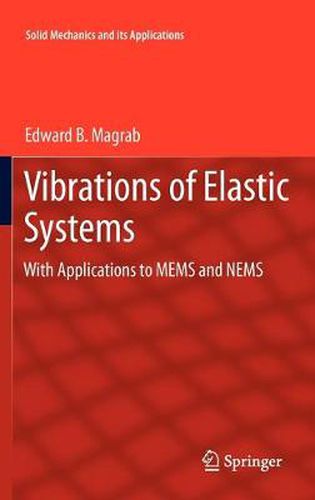Readings Newsletter
Become a Readings Member to make your shopping experience even easier.
Sign in or sign up for free!
You’re not far away from qualifying for FREE standard shipping within Australia
You’ve qualified for FREE standard shipping within Australia
The cart is loading…






This work presents a unified approach to the vibrations of elastic systems as applied to MEMS devices, mechanical components, and civil structures.
Applications include atomic force microscopes, energy harvesters, and carbon nanotubes and consider such complicating effects as squeeze film damping, viscous fluid loading, in-plane forces, and proof mass interactions with their elastic supports. These effects are analyzed as single degree-of-freedom models and as more realistic elastic structures. The governing equations and boundary conditions for beams, plates, and shells with interior and boundary attachments are derived by applying variational calculus to an expression describing the energy of the system. The advantages of this approach regarding the generation of orthogonal functions and the Rayleigh-Ritz method are demonstrated.
A large number of graphs and tables are given to show the impact of various factors on the systems’ natural frequencies, mode shapes, and responses.
$9.00 standard shipping within Australia
FREE standard shipping within Australia for orders over $100.00
Express & International shipping calculated at checkout
This work presents a unified approach to the vibrations of elastic systems as applied to MEMS devices, mechanical components, and civil structures.
Applications include atomic force microscopes, energy harvesters, and carbon nanotubes and consider such complicating effects as squeeze film damping, viscous fluid loading, in-plane forces, and proof mass interactions with their elastic supports. These effects are analyzed as single degree-of-freedom models and as more realistic elastic structures. The governing equations and boundary conditions for beams, plates, and shells with interior and boundary attachments are derived by applying variational calculus to an expression describing the energy of the system. The advantages of this approach regarding the generation of orthogonal functions and the Rayleigh-Ritz method are demonstrated.
A large number of graphs and tables are given to show the impact of various factors on the systems’ natural frequencies, mode shapes, and responses.